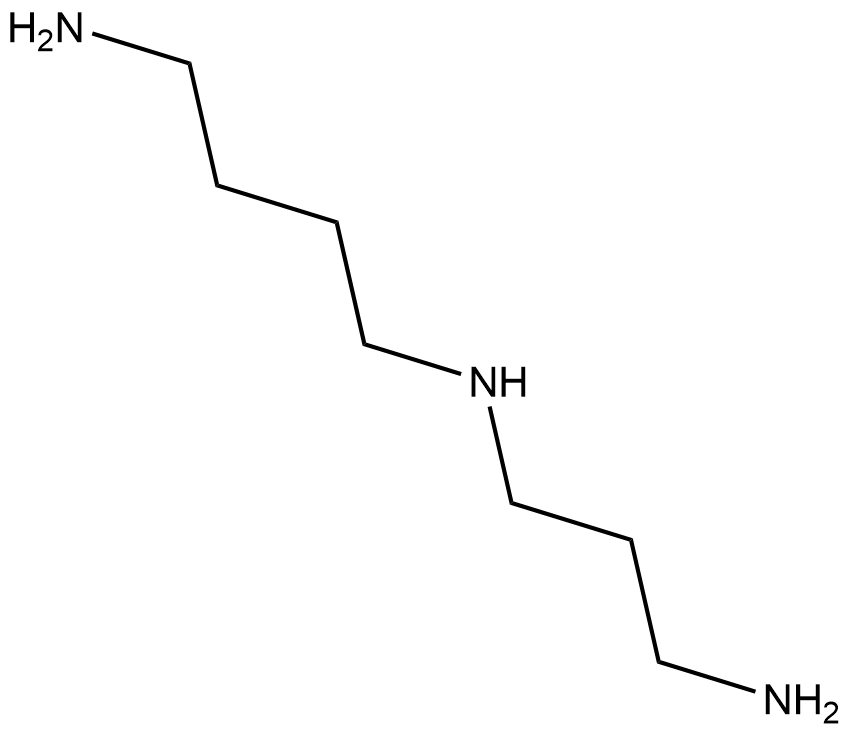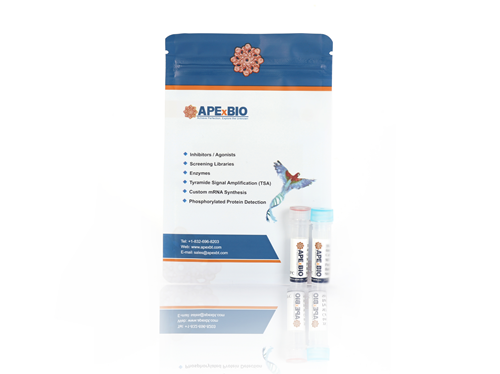Search results for: 'research area cell cycle rad51'
-
 P1244 TNF-alpha/TNFSF2,human recombinant proteinSummary: Tumor necrosis factor alpha (TNF-α), also called cachectin, is the best-know member of the TNF-family, which can cause cell death.
P1244 TNF-alpha/TNFSF2,human recombinant proteinSummary: Tumor necrosis factor alpha (TNF-α), also called cachectin, is the best-know member of the TNF-family, which can cause cell death. -
 BA7408 SpermidineSummary: Spermidine maintains cell membrane stability, increases antioxidant enzyme activity, and improves photosystem II (PSII) and related gene expression.
BA7408 SpermidineSummary: Spermidine maintains cell membrane stability, increases antioxidant enzyme activity, and improves photosystem II (PSII) and related gene expression. -
 BA6076 TSR-033Summary: TSR-033 is a high affinity humanized antibody targeting (lymphocyte activation gene-3) that enhances T cell function and blocking activity in vitro and in vivo.
BA6076 TSR-033Summary: TSR-033 is a high affinity humanized antibody targeting (lymphocyte activation gene-3) that enhances T cell function and blocking activity in vitro and in vivo. -
 K1188 Alcian Blue & Nuclear Fast Red Staining Kit, pH2.5Summary: Alcian Blue & Nuclear Fast Red Staining Kit, pH2.5, widely used to identify chondrogenic differentiation of mesenchymal stem cell
K1188 Alcian Blue & Nuclear Fast Red Staining Kit, pH2.5Summary: Alcian Blue & Nuclear Fast Red Staining Kit, pH2.5, widely used to identify chondrogenic differentiation of mesenchymal stem cell -
 BA8983 PRN694Summary: PRN694 is an irreversible, highly potent and selective, potent covalently bound dual inhibitor of interleukin 2-inducible cell kinase, resting lymphocyte kinase.
BA8983 PRN694Summary: PRN694 is an irreversible, highly potent and selective, potent covalently bound dual inhibitor of interleukin 2-inducible cell kinase, resting lymphocyte kinase. -
 P1179 Recombinant Mouse IGF-1Summary: The insulin-like growth factors (IGFs) belonged to the insulin gene family, are mitogenic polypeptide growth factors that stimulate the proliferation and survival of various cell types
P1179 Recombinant Mouse IGF-1Summary: The insulin-like growth factors (IGFs) belonged to the insulin gene family, are mitogenic polypeptide growth factors that stimulate the proliferation and survival of various cell types -
 P1203 Recombinant Rat IGF-1Summary: The insulin-like growth factors (IGFs) belonged to the insulin gene family, are mitogenic polypeptide growth factors that stimulate the proliferation and survival of various cell types
P1203 Recombinant Rat IGF-1Summary: The insulin-like growth factors (IGFs) belonged to the insulin gene family, are mitogenic polypeptide growth factors that stimulate the proliferation and survival of various cell types -
 P1149 Recombinant Human IFN-beta1bSummary: IFN-βs are proteins produced by many cell types including lymphocytes (NK cells, B-cells and T-cells), macrophages, fibroblasts, endothelial cells, osteoblasts and others.
P1149 Recombinant Human IFN-beta1bSummary: IFN-βs are proteins produced by many cell types including lymphocytes (NK cells, B-cells and T-cells), macrophages, fibroblasts, endothelial cells, osteoblasts and others. -
 R1119 EZ Cap™ CM-EGFP Probe mRNA (m1Ψ)Summary: Cell membrane (CM) probes mRNA with EGFP, modified by N1-Methylpseudo-UTP (m1Ψ), providing higher transcription efficiency and suppressing RNA-mediated innate immune activation.
R1119 EZ Cap™ CM-EGFP Probe mRNA (m1Ψ)Summary: Cell membrane (CM) probes mRNA with EGFP, modified by N1-Methylpseudo-UTP (m1Ψ), providing higher transcription efficiency and suppressing RNA-mediated innate immune activation. -
 BA3203 XL44Summary: XL44 is a binding agent for the hRpn13 protein and induces apoptosis through an hRpn13-dependent mechanism, while also limiting cell survival through a PCLAF-dependent mechanism.
BA3203 XL44Summary: XL44 is a binding agent for the hRpn13 protein and induces apoptosis through an hRpn13-dependent mechanism, while also limiting cell survival through a PCLAF-dependent mechanism.

